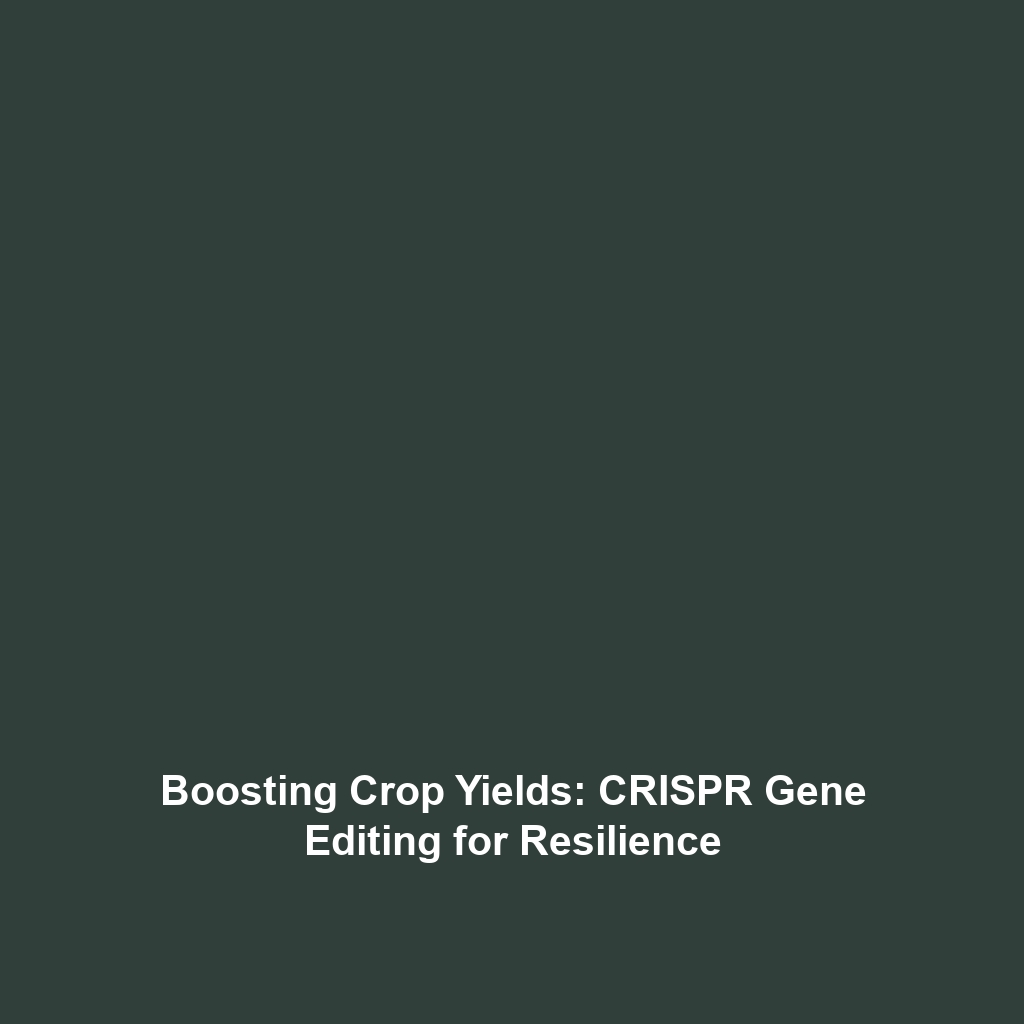Regulatory and Safety Concerns: Oversight of CRISPR Technology
CRISPR gene editing has revolutionized the field of genetics, leading to potential breakthroughs in medicine, agriculture, and biotechnology. However, as with any powerful technology, regulatory and safety concerns associated with CRISPR technology must be thoroughly examined. These concerns are crucial for the ethical application of CRISPR methods and their implications for future generations. This article delves into the regulatory landscape surrounding CRISPR gene editing, detailing its significance in ensuring safe and responsible research practices.
Key Concepts
The regulatory framework for CRISPR technology encompasses various facets aimed at ensuring safety and ethical compliance. Here are some of the core concepts associated with regulatory and safety concerns in CRISPR gene editing:
- Safety Regulations: These are standards that govern the use of CRISPR in research and clinical applications to mitigate risks.
- Ethical Guidelines: Ethical principles formulated by various national and international bodies guide the responsible use of CRISPR technologies.
- Oversight Mechanisms: Regulatory authorities, including the FDA and NIH (U.S.) and EMA (Europe), monitor and assess CRISPR trials, ensuring compliance with established guidelines.
Applications and Real-World Uses
The oversight of CRISPR technology plays a pivotal role in its application across various fields. Notable applications include:
- Medical Therapies: Regulatory bodies oversee CRISPR’s use in gene therapy for genetic disorders, ensuring patient safety and efficacy.
- Agricultural Innovations: Regulations help manage CRISPR’s application in creating disease-resistant crops.
- Microbial Engineering: These guidelines support safe modifications in microbiology, allowing advancements in pharmaceuticals and biofuels.
These real-world applications highlight how the oversight of CRISPR technology ensures its responsible use in varied contexts related to CRISPR gene editing.
Current Challenges
Despite the advancements, several challenges persist regarding regulatory and safety oversight in CRISPR technology:
- Inconsistent Regulations: Varied regulations across countries can lead to discrepancies in CRISPR applications.
- Public Perception: Misinformation and ethical concerns can influence public support for gene editing technologies.
- Unintended Consequences: Risks of off-target effects and ecological impacts from CRISPR modifications raise significant issues in gene editing.
Future Research and Innovations
Future research in regulatory and safety concerns surrounding CRISPR technology is poised to bring transformative innovations. Key areas of focus include:
- Enhanced Regulatory Frameworks: Development of more standardized global regulations to provide clearer guidelines.
- Next-Gen CRISPR Techniques: Innovations like base editing and prime editing promise to reduce off-target risks, demanding diligent oversight.
- Increased Public Engagement: Ongoing dialogue between scientists, policymakers, and the public is essential to build trust and understanding.
Conclusion
In summary, the regulatory and safety concerns surrounding the oversight of CRISPR technology are paramount for its responsible integration into society. Addressing these concerns not only ensures the safety of present applications but also shapes the future of CRISPR gene editing itself. As we continue to explore CRISPR’s potential, regulatory bodies must adapt to keep pace with innovations while fostering public confidence. For more information on gene editing technologies, visit our articles on Ethics in Gene Editing and The Future of Genetic Engineering.


